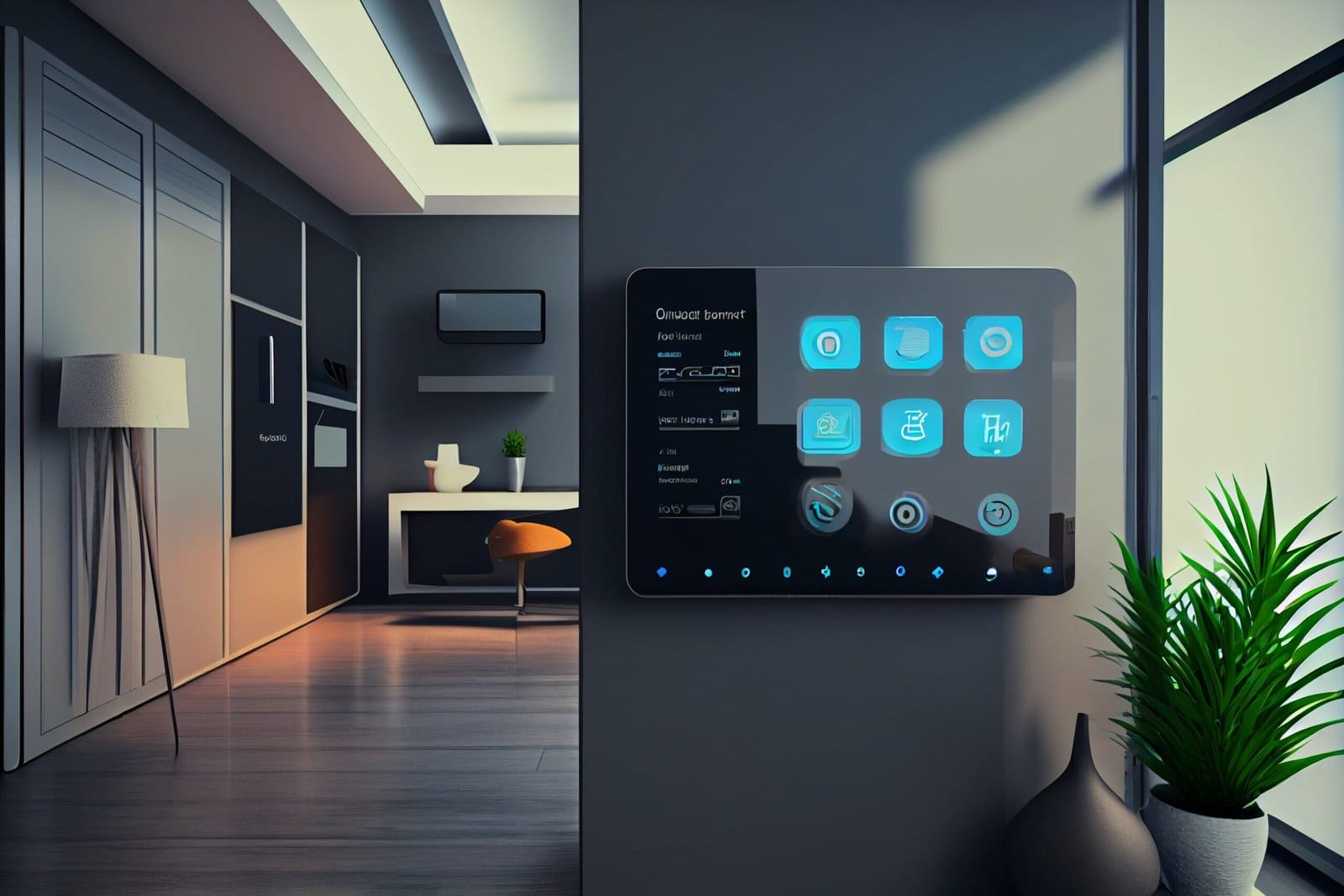Installing a smart thermostat may seem like a daunting task, but fear not – it’s actually much easier than you might think! In this article, we will explore just how simple it is to install a smart thermostat in your home. By following a few straightforward steps, you can upgrade your old thermostat to a smart one, enjoying the convenience and energy savings it brings. So, let’s get started and discover just how easy it is to make your home smarter!
Determining Compatibility
Checking your current thermostat
Before you begin installing a smart thermostat, it is important to check your current thermostat. Take a moment to familiarize yourself with its features and functions. Make note of any special settings or programming that you currently use. This will help you later when configuring your new smart thermostat.
Checking compatibility with your HVAC system
Not all HVAC systems are compatible with smart thermostats, so it is crucial to confirm compatibility before purchasing your new device. Check the manufacturer’s specifications for your HVAC system and compare it with the compatibility requirements of the smart thermostat you are considering. Additionally, you may need to consider whether your HVAC system has a C-wire, which some smart thermostats require for power.
Gathering Tools and Materials
Required tools
To install a smart thermostat, you will need a few basic tools. The most common tools required include a screwdriver (typically a Phillips-head or flat-head), wire strippers, and a voltage tester to ensure the power is off during installation. It is important to have these tools on hand before starting the installation process.
Optional materials
While not essential, there are a few optional materials you might consider using during installation. These include wall anchors or masonry screws if you are mounting the thermostat on a surface that requires additional support, and a level to ensure that the thermostat is straight on the wall.

Shutting Off Power
Locating your electrical panel
To ensure your safety during the installation process, it is necessary to shut off the power to your HVAC system. The first step is to locate your electrical panel. This is usually found in a garage, basement, or utility closet. Open the panel door and familiarize yourself with the layout of the breakers.
Turning off power to your HVAC system
Once you have located your electrical panel, you need to identify the breaker that controls your HVAC system. This is usually labelled or can be determined by trial and error. Switch off the breaker to cut off power to your HVAC system. It is important to double-check that the power is off by using a voltage tester before proceeding with the installation.
Removing Old Thermostat
Removing the thermostat cover
With the power off, you can now begin removing your old thermostat. Start by gently pulling off the thermostat cover. This may involve loosening screws or pressing release tabs, depending on the model of your thermostat. Be careful not to damage the wires or any other components as you remove the cover.
Disconnecting wires
Once the thermostat cover is removed, you will see the wiring connections. Take a picture or make a diagram of the wire connections to use as a reference during the installation of your new thermostat. Carefully disconnect each wire from the terminal by either unscrewing or releasing a locking mechanism. Take note of the colors and labels on the wires to ensure correct reconnection later.
Removing the mounting plate
After disconnecting the wires, you can remove the mounting plate from the wall. Most thermostats are mounted with screws, so use your screwdriver to remove them. Once the mounting plate is detached, you can set it aside. Be cautious not to damage the wall surface during this process.

Installing Smart Thermostat Base
Mounting the base to the wall
With the old thermostat removed, it is time to install the base of your new smart thermostat. Start by aligning the base with the existing holes or use a level to ensure it is straight. Once the base is in position, firmly press it against the wall. If additional support is required, use wall anchors or masonry screws. Make sure the base is securely attached before moving on to the next step.
Connecting wires to the base
Now that the base is securely mounted, you can begin connecting the wires. Refer to the picture or diagram you took earlier to match each wire with the corresponding terminal on the base. Loosen the terminal screws, insert the wires, and tighten the screws to secure the connections. Double-check that each wire is properly seated to ensure proper functionality.
Connecting to Wi-Fi
Accessing the thermostat settings
To fully utilize the smart features of your thermostat, you will need to connect it to your home Wi-Fi network. Start by turning on the power to your HVAC system at the electrical panel. Once the system is powered on, your smart thermostat should display the initial setup screen. Follow the on-screen instructions to access the thermostat settings.
Connecting to your home Wi-Fi network
In the settings menu, look for the option to connect to Wi-Fi. Select this option and follow the prompts to connect to your home network. You may need to enter your Wi-Fi password or use other authentication methods. Once successfully connected, your smart thermostat should display a confirmation message or an indicator light to signify the connection.

Configuring Settings
Setting your desired temperature
With your smart thermostat connected to Wi-Fi, it’s time to configure the settings. One of the first settings you will encounter is the desired temperature. Use the thermostat interface to adjust the temperature to your preference. Some smart thermostats also allow for personalized settings, such as setting different temperatures for different times of the day.
Creating a heating/cooling schedule
Another important aspect of configuring your smart thermostat is creating a heating and cooling schedule. This allows you to set specific temperature changes throughout the day to optimize comfort and energy efficiency. Take some time to establish your desired schedule, considering your daily routines and preferences. Once your schedule is set, your smart thermostat will automatically adjust the temperature based on your preferences.
Testing and Troubleshooting
Turning on power to HVAC system
After configuring the settings, it’s time to test your smart thermostat. Start by turning on the power to your HVAC system at the electrical panel. Once the system is powered on, your smart thermostat should activate and display the current temperature. Allow some time for the thermostat to adjust and ensure that warm or cool air is flowing when appropriate.
Verifying thermostat functionality
With the power on, verify that your smart thermostat is functioning correctly. Test each function, such as adjusting the temperature, switching between heating and cooling modes, and activating any additional features. If everything is working as expected, you can proceed to enjoy the benefits of your new smart thermostat.
Troubleshooting common issues
In case you encounter any issues with your smart thermostat, it is important to troubleshoot them before seeking professional help. Refer to the manufacturer’s instructions or online support resources for troubleshooting guidance. Some common issues may include Wi-Fi connectivity problems, miswiring, or sensor calibration. Follow the recommended steps to resolve these issues, and if necessary, contact the manufacturer for further assistance.
Additional Features and Integration
Exploring additional features
Smart thermostats often come with additional features that can enhance your comfort and energy efficiency. Some examples include learning capabilities, geofencing, energy usage reports, and compatibility with voice assistants. Take some time to explore these features in the settings menu or through the manufacturer’s documentation. You may find new ways to optimize your HVAC system and make your home even smarter.
Integrating with smart home devices
If you have other smart home devices, consider integrating your smart thermostat with them. Many smart thermostats are compatible with popular smart home platforms, such as Amazon Alexa, Google Assistant, or Apple HomeKit. By integrating your devices, you can control your thermostat using voice commands or create automation routines that optimize your comfort based on various factors, such as occupancy or outdoor weather conditions.
Professional Installation
Benefits of professional installation
While installing a smart thermostat can be a relatively straightforward process, some individuals may prefer professional installation. Hiring a qualified technician offers several advantages. Professional installers have experience with a wide range of HVAC systems and can ensure proper wiring and functionality. They can also provide guidance on optimizing your system for energy efficiency and answer any questions regarding maintenance or troubleshooting.
Finding a qualified technician
If you decide to opt for professional installation, it is important to find a qualified technician. Start by researching local HVAC companies or technicians with experience in smart thermostat installations. Look for reviews or ask for recommendations from friends, family, or neighbours who have recently had a similar installation. Contact the chosen technician or company to inquire about their fees, availability, and any specific requirements.
Installing a smart thermostat can be a rewarding and straightforward process. By following the steps outlined above, you can confidently install your new smart thermostat, connect it to your home Wi-Fi network, configure the settings to your liking, and enjoy the benefits of increased comfort and energy efficiency. Whether you choose to install it yourself or hire a professional, a smart thermostat is a worthwhile investment that can significantly improve your home’s heating and cooling experience.
